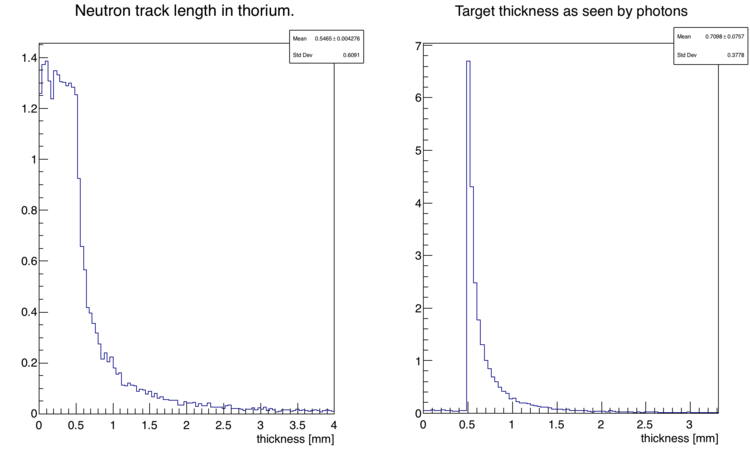Difference between revisions of "Elastic scattering in rotating thorium plate"
Jump to navigation
Jump to search
(→Result) |
(→Result) |
||
| Line 6: | Line 6: | ||
=Result= | =Result= | ||
| − | On average, photons see a target thickness of 0.72 mm and neutrons travel though 0.54 mm of thorium before escaping. 2.5% of fission neutrons underwent a scattering event, so statistically, 95% of n-n pairs escape the target unmolested, since <math> (1-0.025)^{2} \approx 0.95</math>. | + | On average, photons see a target thickness of 0.72 mm and neutrons travel though 0.54 mm of thorium before escaping. 2.5% of fission neutrons underwent a scattering event, so statistically, '''95% of n-n pairs escape the target unmolested''', since <math> (1-0.025)^{2} \approx 0.95</math>. |
Revision as of 23:25, 16 October 2016
Overview
11.5 MeV photons are generated uniformly on the curved face of a cylinder with a direction of travel inward and normal to the surface. Enclosed within the cylinder is a cuboid thorium target that is 4 cm high along the cylindrical axis, 0.5 mm thick, and 2 cm wide.
Result
On average, photons see a target thickness of 0.72 mm and neutrons travel though 0.54 mm of thorium before escaping. 2.5% of fission neutrons underwent a scattering event, so statistically, 95% of n-n pairs escape the target unmolested, since .
